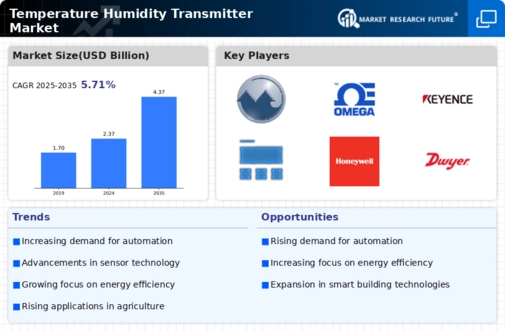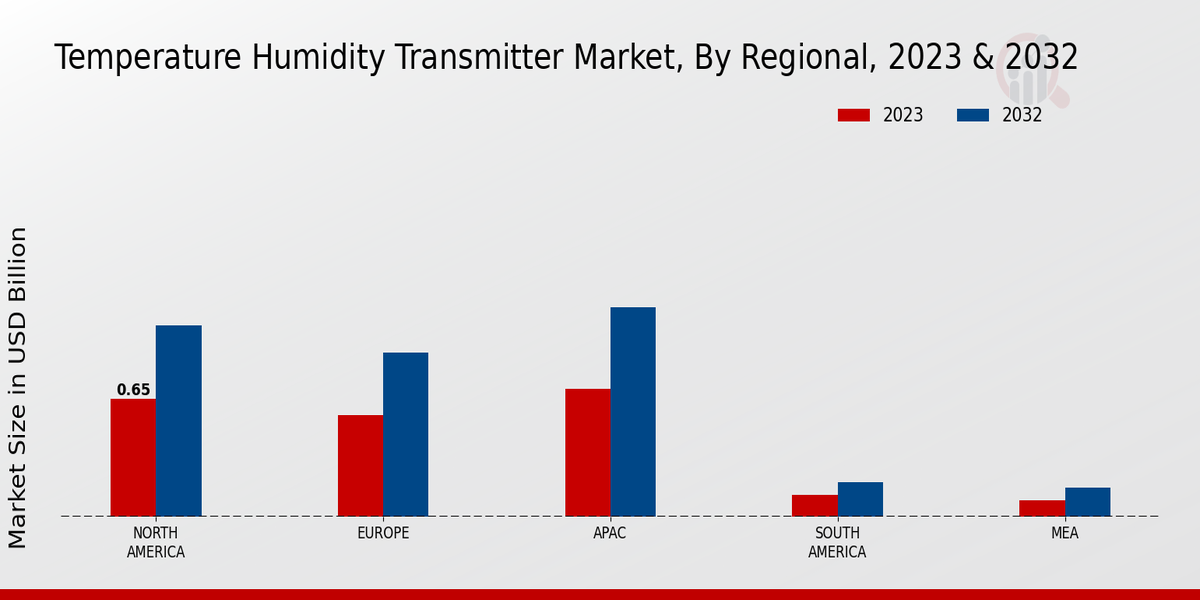Market Growth Projections
The Global Temperature Humidity Transmitter Market Industry is poised for substantial growth, with projections indicating a market size of 2.37 USD Billion in 2024 and an anticipated increase to 4.37 USD Billion by 2035. This growth trajectory reflects a compound annual growth rate of 5.71% from 2025 to 2035. The expanding applications across various sectors, coupled with technological advancements, are likely to drive this upward trend, positioning the market for continued expansion in the coming years.
Regulatory Compliance and Standards
Stringent regulatory frameworks across various industries are propelling the Global Temperature Humidity Transmitter Market Industry. Compliance with standards set by organizations such as the FDA and ISO necessitates accurate monitoring of environmental conditions. For example, the food and beverage industry must adhere to specific temperature and humidity levels to ensure product safety and quality. This regulatory pressure is likely to drive market growth, with projections indicating a market size of 4.37 USD Billion by 2035, as companies invest in advanced monitoring solutions to meet compliance requirements.
Expansion of Industrial Applications
The diversification of industrial applications is a key driver for the Global Temperature Humidity Transmitter Market Industry. Sectors such as agriculture, manufacturing, and data centers increasingly rely on precise environmental monitoring to enhance productivity and operational efficiency. For instance, in agriculture, temperature and humidity control are vital for optimizing crop yields. This broadening of applications is anticipated to sustain market growth, as industries recognize the importance of accurate environmental monitoring in achieving their operational goals.
Growth of Smart Building Technologies
The rise of smart building technologies is reshaping the Global Temperature Humidity Transmitter Market Industry. As urbanization accelerates, there is a growing emphasis on energy efficiency and occupant comfort in building design. Temperature and humidity transmitters play a crucial role in smart building systems, enabling automated climate control and energy management. This trend is expected to contribute to the market's expansion, as more construction projects incorporate smart technologies, leading to increased demand for reliable monitoring solutions.
Rising Demand for Environmental Monitoring
The increasing awareness regarding environmental conditions is driving the Global Temperature Humidity Transmitter Market Industry. Industries such as pharmaceuticals, food processing, and HVAC systems require precise monitoring of temperature and humidity to ensure product quality and compliance with regulations. For instance, the pharmaceutical sector mandates strict environmental controls to maintain drug efficacy. This growing need for environmental monitoring is projected to propel the market to a valuation of 2.37 USD Billion in 2024, reflecting a robust demand for reliable temperature and humidity measurement solutions.
Technological Advancements in Sensor Technology
Innovations in sensor technology are significantly influencing the Global Temperature Humidity Transmitter Market Industry. The advent of smart sensors equipped with IoT capabilities allows for real-time monitoring and data analytics, enhancing operational efficiency across various sectors. These advancements enable industries to optimize energy consumption and improve product quality. As a result, the market is expected to witness a compound annual growth rate of 5.71% from 2025 to 2035, indicating a shift towards more sophisticated and integrated temperature and humidity measurement systems.





















Leave a Comment